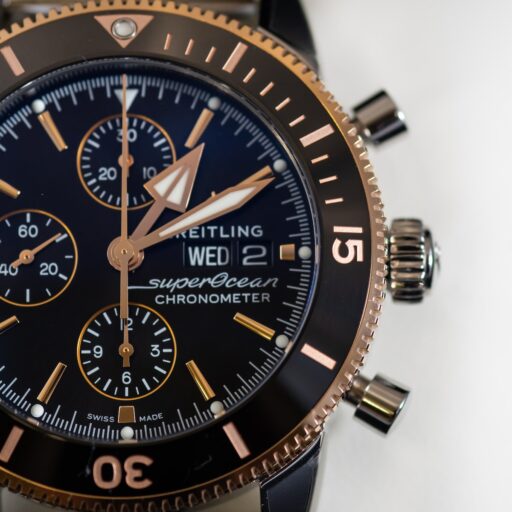Support our educational content for free when you purchase through links on our site. Learn more
When Did Wristwatches Replace Pocket Watches? Unraveling the Timepiece Evolution! ⌚

Have you ever wondered how the wristwatch became the go-to timepiece, leaving pocket watches in the dust? The transformation from pocket to wrist is not just a tale of fashion; it’s a fascinating journey through history, technology, and cultural shifts. In this article, we’ll explore 10 pivotal moments that led to the rise of wristwatches and the decline of their pocket counterparts. You might be surprised to learn that the first wristwatches were actually designed for soldiers during World War I—an innovation that changed the way we perceive timekeeping forever!
As we delve into this captivating narrative, we’ll uncover the reasons behind the wristwatch’s dominance, the intricate designs of pocket watches, and the impact of modern technology on our relationship with timepieces. So, buckle up as we take a closer look at this evolution and what it means for watch enthusiasts today!
Key Takeaways
- Wristwatches gained popularity during World War I due to their practicality for soldiers.
- Pocket watches, once a symbol of status, are now primarily collectibles.
- The introduction of smartwatches has further transformed the landscape of timekeeping.
- Key innovations in wristwatch design, such as self-winding mechanisms and waterproofing, contributed to their widespread adoption.
If you’re interested in exploring the world of wristwatches or pocket watches, check out our recommendations for luxury watch brands and men’s watches to find the perfect timepiece for your collection!
Table of Contents
- Quick Tips and Facts
- The Evolution of Timekeeping: From Pocket to Wrist
- A Brief History of Pocket Watches and Their Rise
- The Shift to Wristwatches: Key Milestones
- The Role of Wristwatches in the Modern Era
- Types of Pocket Watches: A Collector’s Guide
- Watch Movements Explained: From Pocket to Wrist
- The Decline of Pocket Watches: What Happened?
- Most Complicated Pocket Watches: A Showcase of Craftsmanship
- The Impact of Technology on Watch Design
- Cultural Significance of Wristwatches vs. Pocket Watches
- Conclusion
- Recommended Links
- FAQ
- Reference Links
Quick Tips and Facts
- Wristwatches began to replace pocket watches significantly after World War I due to their practicality and ease of use.
- The trench watch, a type of wristwatch, was developed for soldiers, marking a pivotal moment in watch history.
- Pocket watches, once a status symbol, are now mostly collectibles or gifts, with a resurgence in niche markets like steampunk culture.
- Types of movements in watches include mechanical, quartz, and automatic, each offering unique benefits and drawbacks.
- The most complicated pocket watches can have over 50 complications, showcasing incredible craftsmanship.
The Evolution of Timekeeping: From Pocket to Wrist
The journey from pocket watches to wristwatches is not just a tale of technological advancement; it’s a story of social change and cultural evolution. Let’s dive into how these timepieces transitioned from being cherished heirlooms to everyday essentials.
Key Milestones in Watch Evolution
| Year | Milestone | Description |
|---|---|---|
| 1526 | First Pocket Watch | Peter Henlein creates the first portable timepiece. |
| 1868 | First Wristwatch | Patek Philippe designs a wristwatch for Countess Koscowicz. |
| 1914 | Trench Watches | Military needs during WWI lead to the creation of robust wristwatches. |
| 1920s | Public Adoption | Returning soldiers popularize wristwatches in civilian life. |
| 1970s | Quartz Revolution | Quartz technology makes watches more accurate and affordable. |
This table highlights the transformative moments that shaped how we view timekeeping today.
A Brief History of Pocket Watches and Their Rise

Pocket watches have a rich history, dating back to the 16th century. Initially, they were bulky and worn around the neck, but their design evolved over time.
The Golden Age of Pocket Watches
- Status Symbol: In the 19th century, pocket watches became a symbol of wealth and sophistication. Brands like Patek Philippe and Vacheron Constantin produced exquisite pieces that were often passed down through generations.
- Railroad Influence: The introduction of standardized timekeeping for railroads in the late 1800s led to the creation of railroad-grade pocket watches. These watches had to meet strict accuracy standards, ensuring safe travel.
Pocket Watch Styles
| Style | Description |
|---|---|
| Hunter-case | Features a protective lid to safeguard the dial. |
| Open-face | Lacks a cover, allowing for quick time checks. |
The Shift to Wristwatches: Key Milestones
The transition to wristwatches was not just a fashion statement; it was driven by necessity, especially during World War I. Soldiers needed a way to check the time without fumbling in their pockets.
Trench Watches: The Game Changer
- Design: Trench watches were designed for durability, often featuring luminous hands and robust cases.
- Functionality: These watches allowed soldiers to manage time efficiently under pressure, marking the beginning of the end for pocket watches.
The Role of Wristwatches in the Modern Era
Fast forward to today, and wristwatches have become more than just timekeeping devices; they are fashion statements and technological marvels.
The Rise of Smartwatches
- Integration with Technology: The advent of smartwatches has added a new layer to wristwatches, combining traditional timekeeping with modern technology.
- Fashion Meets Function: Brands like Apple and Samsung have created stylish smartwatches that appeal to both tech enthusiasts and fashion-forward individuals.
Types of Pocket Watches: A Collector’s Guide
For those who appreciate the artistry of pocket watches, understanding the different types can enhance your collection.
Popular Pocket Watch Types
| Type | Features |
|---|---|
| Key-wind | Requires a key to wind and set the time. |
| Stem-wind | Uses a stem for winding, popularized by Patek Philippe. |
| Railroad-grade | Must meet specific accuracy and design standards. |
Watch Movements Explained: From Pocket to Wrist
Understanding watch movements is crucial for any watch enthusiast. Here’s a breakdown of the most common types:
Types of Movements
| Movement Type | Description | Pros | Cons |
|---|---|---|---|
| Mechanical | Powered by a mainspring | Artisan craftsmanship | Requires regular winding |
| Quartz | Battery-powered | Highly accurate | Limited lifespan |
| Automatic | Self-winding through motion | Convenient for daily wear | Can be expensive |
The Decline of Pocket Watches: What Happened?
Despite their rich history, pocket watches have seen a significant decline in popularity.
Factors Contributing to Decline
- Convenience: Wristwatches offer easier access and are more practical for daily use.
- Cultural Shift: As society moved towards more casual attire, the formal pocket watch became less relevant.
Most Complicated Pocket Watches: A Showcase of Craftsmanship
For collectors, the complexity of a watch can be a testament to its craftsmanship.
Notable Complicated Pocket Watches
| Watch | Complications |
|---|---|
| Vacheron Constantin Reference 57260 | 57 complications |
| Patek Philippe Calibre 89 | 33 complications |
| Patek Philippe Henry Graves Supercomplication | 24 complications |
These watches are not just timepieces; they are works of art that showcase the pinnacle of horological engineering.
Conclusion

The transition from pocket watches to wristwatches is a fascinating journey that reflects broader changes in society and technology. While pocket watches may not dominate the market anymore, they hold a special place in the hearts of collectors and enthusiasts alike.
For those interested in exploring more about the evolution of watches, check out our articles on Watch History and Evolution and Luxury Watch Brands.
Recommended Links
FAQ

Q: Why did wristwatches become more popular than pocket watches?
A: The practicality and ease of access of wristwatches, especially during and after World War I, led to their rise in popularity.
Q: Are pocket watches still made today?
A: Yes, many luxury brands continue to produce pocket watches, often as collector’s items or special editions.
Reference Links
Conclusion

In summary, the transition from pocket watches to wristwatches is a captivating tale of innovation, practicality, and social change. While pocket watches were once the epitome of elegance and craftsmanship, the advent of wristwatches—especially during and after World War I—ushered in a new era of timekeeping that prioritized accessibility and functionality.
Key Takeaways:
- Wristwatches became popular due to their practicality, especially in military settings.
- Pocket watches, while still cherished by collectors, have largely been relegated to niche markets.
- The design innovations in wristwatches, such as self-winding mechanisms and waterproof features, made them more desirable.
If you’re considering a wristwatch for both functionality and style, we confidently recommend exploring brands like Rolex, Omega, and Patek Philippe. Each of these brands not only offers quality timepieces but also carries a legacy that reflects the evolution of watchmaking.
Recommended Links
- 👉 Shop Rolex Watches on: Amazon | Rolex Official Website
- 👉 Shop Omega Watches on: Amazon | Omega Official Website
- 👉 Shop Patek Philippe Watches on: Amazon | Patek Philippe Official Website
- Books on Watchmaking: The Watch Book | A Man and His Watch
FAQ

What were the main factors that led to the decline of pocket watches and the rise of wristwatches?
Changing Lifestyles and Practicality
The decline of pocket watches can be attributed to several factors:
- Convenience: Wristwatches are easier to wear and check time without needing to dig into a pocket.
- Cultural Shifts: As fashion became more casual, the formal pocket watch lost its appeal.
- Technological Advancements: The introduction of quartz movements in wristwatches made them more affordable and accurate, further diminishing the allure of pocket watches.
How did World War I influence the transition from pocket watches to wristwatches as a preferred timekeeping device?
Military Necessity
World War I played a crucial role in the transition:
- Trench Watches: Soldiers required a hands-free way to check the time, leading to the development of trench watches, which were robust and easy to read.
- Practical Use: The need for quick time checks in battle conditions made wristwatches a practical choice, leading to their acceptance in civilian life post-war.
What were some of the key design innovations that made wristwatches more practical and desirable than pocket watches?
Innovations in Design
Several design innovations contributed to the popularity of wristwatches:
- Self-Winding Mechanisms: These allowed wearers to avoid the hassle of manual winding.
- Waterproofing: Many wristwatches became water-resistant, making them suitable for various activities.
- Luminous Dials: Enhancements like luminous hands improved visibility in low-light conditions, adding to their practicality.
When did luxury watch brands like Rolex and Omega begin to popularize wristwatches as a fashion accessory and status symbol?
The Rise of Fashion
Luxury brands began to popularize wristwatches as fashion accessories in the early to mid-20th century:
- Rolex: Gained fame in the 1920s and 1930s for its innovative designs and marketing as a luxury item.
- Omega: Became synonymous with precision and style, especially after being the official timekeeper for the Olympics.


